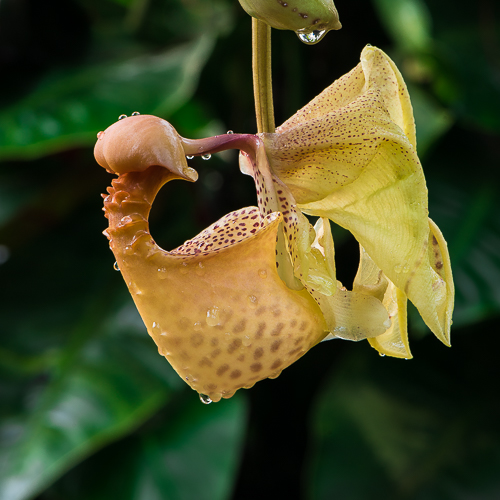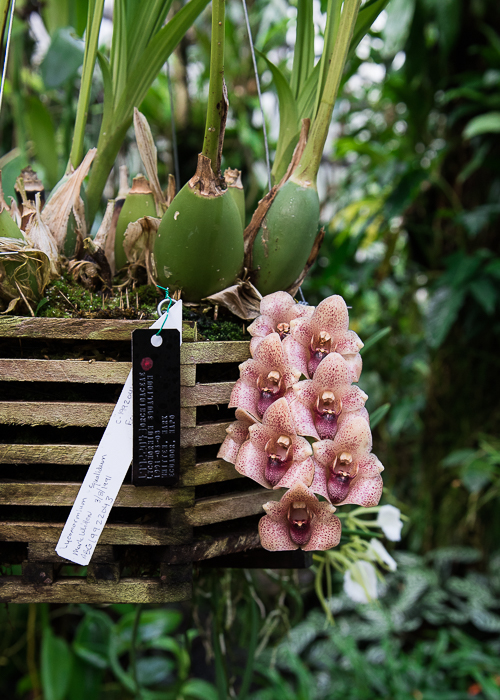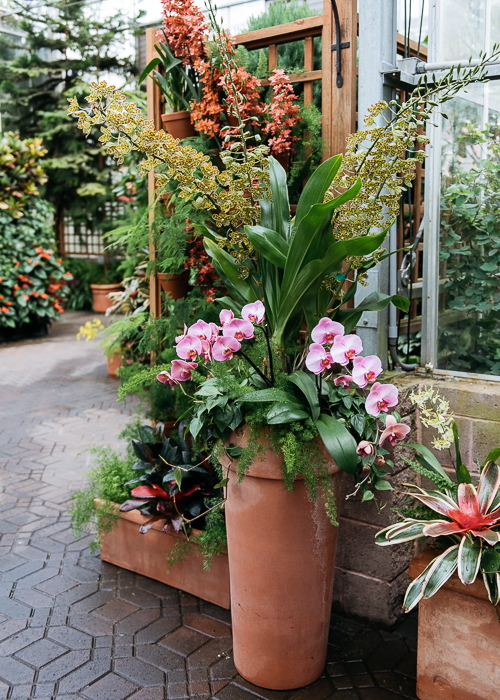The basal one or two flowers are yellow with small purple spots. They are also strongly fragrant.
The remaining 20 or so flowers are ivory overlaid with large red-purple blotches. They have no fragrance.
This is an example of dimorphism in flowers, hence the name, Dimorphorchis. However, this is an unusual type of floral dimorphism, because both floral forms appear fertile and capable of self fertilization.
A better known type of floral dimorphism is sexual dimorphism, in which male and female flowers are produced that are structurally different. In Catasetum, for example, male and female flowers can be produced by the same plant, but are usually produced at different times, a temporal barrier to self pollination that increases the likelihood of cross pollination and genetic recombination. (Male Catasetum flowers are pictured above, female flowers below)
So, what's up with Dimorphorchis? Why are there two floral forms?
If successful outcrossing is a rare event in nature, for example if plants occur at low density, then there might be selection for a floral form that is readily selfed.
Possibly the plant attracts two different pollinator species, one species that arrives early for the fragrance, doesn't linger, flies long distances, and has a high success rate of outcrossing, creating fewer capsules but stronger offspring. Maybe a crowd of secondary pollinators arrive late to the party and stick around long enough to ensure that the remainder of the flowers are self pollinated. Without field studies, it's just speculation.
I'm currently waiting to see if the selfing I did on our plant last week was successful. It would be lovely to be able to distribute some seedlings from this plant.










































